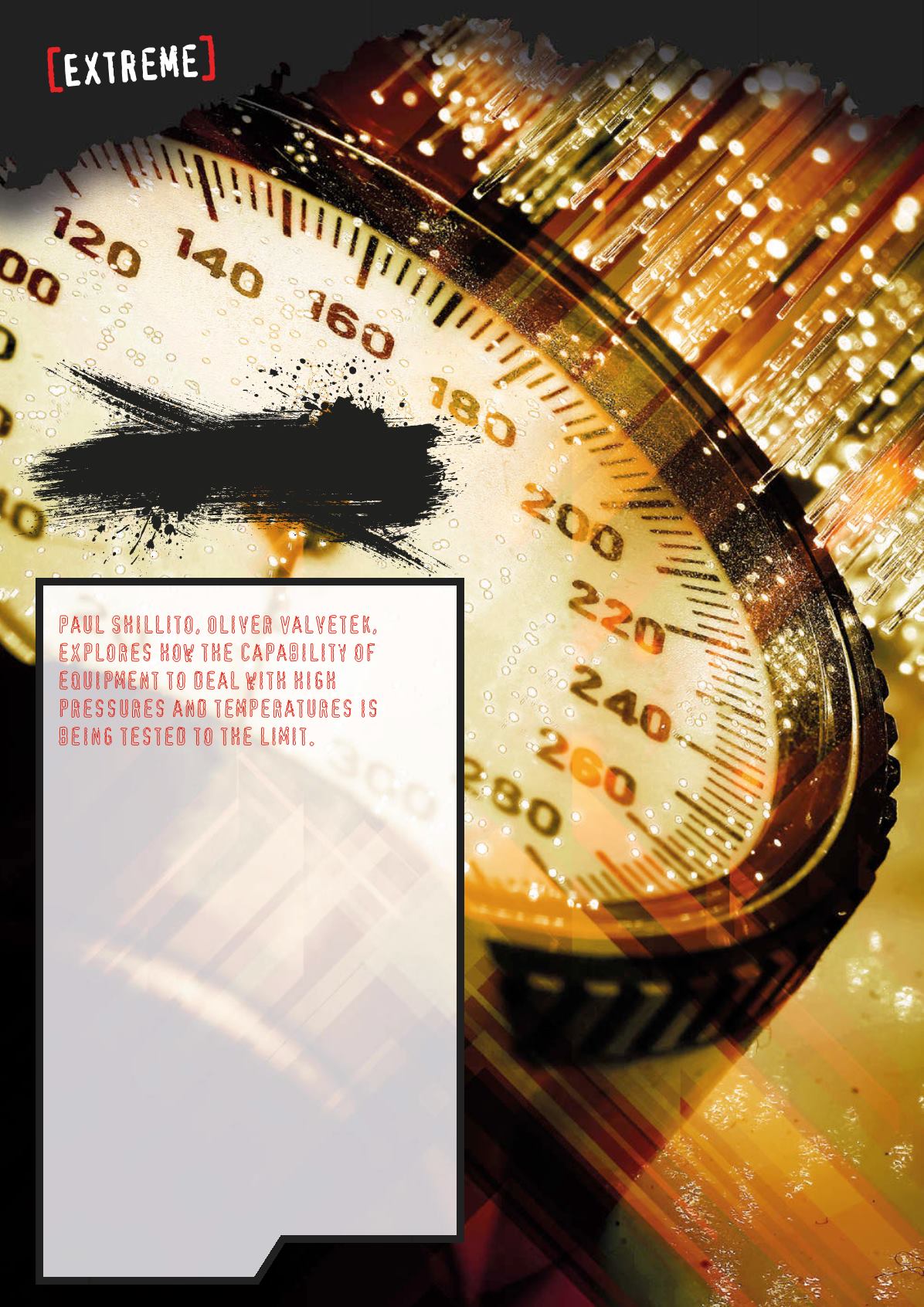
58 |
58
|
Oilfield Technology
January
2016
O
il and gas are finite resources, but demand for energy
continues to grow globally each year. As a consequence,
energy businesses are looking at offshore reserves that
would previously have been considered uneconomical to access in
order to secure future supply.
Among these harder targets are high pressure, high temperature
(HPHT) wells – loosely defined as those in which the oil and gas is at
a temperature greater than 150˚C and requiring blowout prevention
measures rated to over 15 000 psi. Manufacturing equipment that
is capable of extracting these reserves safely is a significant design
and engineering challenge.
Engineering valves that will deliver 100% reliability under
these conditions over the typical lifespan of an oil well – which
can be up to 40 years – requires an extremely high level of
manufacturing precision, as well as careful selection of materials
and truly rigorous testing.
Oliver Valvetek is currently working closely with major
international energy businesses and contractors to develop a
range of small-bore valves rated at 20 000 psi of pressure and up to
400˚F to meet this new challenge. Achieving this rating for subsea
equipment is a key goal for the business, as it will both open up new
extreme HPHT wells that are currently uneconomical to exploit and
also increase the safety margins on less extreme projects. In other
Paul Shillito, Oliver Valvetek,
explores how the capability of
equipment to deal with high
pressures and temperatures is
being tested to the limit.
TACKLING HPHT
CHALLENGES


